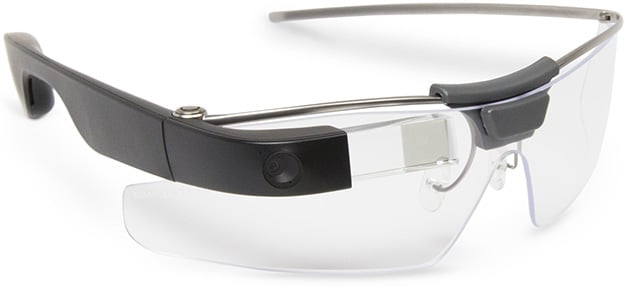Google Glass Is Being Used To Help Children With Autism Enhance Social Awareness
The world can be a scary place, but it can be particularly frightening if you have a difficult time interpreting nonverbal cues. One recent study used Google Glass smart glasses to help young children with autism better recognize facial expressions. The researchers are hopeful that Google Glass may assuage some of the children's’ social anxieties and improve their ability to understand emotions.
The study was funded by Stanford University, the United States Institutes of Health, and several other organizations. Fourteen children were invited to attend three twenty minutes sessions per week for twenty weeks. The glasses used an app to read the faces of those around the wearer and display an emoticon indicating their emotions.
The glasses offered three interactive modes and eight main emotions--happiness, sadness, anger, disgust, surprise, fear, neutral, and contempt. The first mode “Guess the Emotion” had children guess which emotion their parent or guardian was acting out. The second mode, “Capture the Emotion” asked the child to give clues to what emotion they would like for their parent to act out. The final mode, “Free Play” would display emoticons as the children went about playing and interacting with their families.

Researchers concluded that by the end of the study, twelve out of the fourteen children were making better eye contact with those around them. Six of the children “moved up in the autism spectrum classification”. One parent remarked that their child had started to look for nonverbal cues even without the glasses.
The results of this study are astounding, but the research is not without its limitations. Dennis Wall, an associate professor of pediatrics and biomedical data science at the Stanford University School of Medicine, noted that the app was only accurate 97% of the time. Lighting can affect how the software interprets a facial expression. The glasses were also only able to capture certain emotions and did not include the full and varied spectrum of emotions human beings can feel. The glasses were tested on elementary-aged students. It is unclear whether the glasses would be as effective with older children, teens, or adults.
Despite these limitations, the researchers are hopeful the glasses will prove to be particularly useful for those “windows of brain development where the interventional therapy can have a major impact”. No one method will ever be enough for everyone, but augmented reality (AR) devices such as Google Glass may prove to be beneficial and practical to those on the autism spectrum. We can only hope that as technology and our understanding of the human body progress, we will be able to develop more helpful tools for those with developmental disorders.
The study was funded by Stanford University, the United States Institutes of Health, and several other organizations. Fourteen children were invited to attend three twenty minutes sessions per week for twenty weeks. The glasses used an app to read the faces of those around the wearer and display an emoticon indicating their emotions.
The glasses offered three interactive modes and eight main emotions--happiness, sadness, anger, disgust, surprise, fear, neutral, and contempt. The first mode “Guess the Emotion” had children guess which emotion their parent or guardian was acting out. The second mode, “Capture the Emotion” asked the child to give clues to what emotion they would like for their parent to act out. The final mode, “Free Play” would display emoticons as the children went about playing and interacting with their families.

Researchers concluded that by the end of the study, twelve out of the fourteen children were making better eye contact with those around them. Six of the children “moved up in the autism spectrum classification”. One parent remarked that their child had started to look for nonverbal cues even without the glasses.
The results of this study are astounding, but the research is not without its limitations. Dennis Wall, an associate professor of pediatrics and biomedical data science at the Stanford University School of Medicine, noted that the app was only accurate 97% of the time. Lighting can affect how the software interprets a facial expression. The glasses were also only able to capture certain emotions and did not include the full and varied spectrum of emotions human beings can feel. The glasses were tested on elementary-aged students. It is unclear whether the glasses would be as effective with older children, teens, or adults.
Despite these limitations, the researchers are hopeful the glasses will prove to be particularly useful for those “windows of brain development where the interventional therapy can have a major impact”. No one method will ever be enough for everyone, but augmented reality (AR) devices such as Google Glass may prove to be beneficial and practical to those on the autism spectrum. We can only hope that as technology and our understanding of the human body progress, we will be able to develop more helpful tools for those with developmental disorders.

